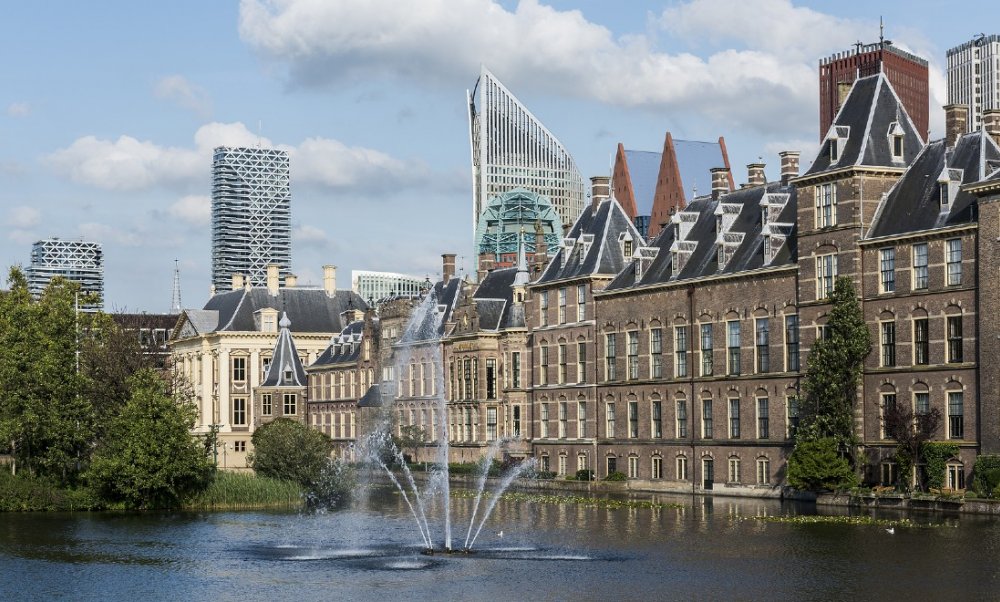
About The Netherlands
The Netherlands has a Constitutional monarchy, Willem-Alexander (2013) is the current Sovereign monarch, and Mark Rutte is the Prime Minister.
The nation has a rich history with several countries like Spain, France and Romans ruled the country. The nation’s independence was not completely established until after the Thirty Years’ War (1618-1648) when the country’s rise as a commercial and maritime power began. In 1688, the English Parliament invited William of Orange, stadtholder, and his wife, Mary Stuart, to rule England as William III and Mary II. William then used the combined resources of England and The Netherlands to wage war on Louis XIV’s France. In 1814, all the provinces of Holland and Belgium were merged into one kingdom, but in 1830 the southern provinces broke away to form the kingdom of Belgium. A liberal constitution was adopted by the Netherlands in 1848.
The Netherlands consists of 12 provinces with more than 40% of the total population of the country live in the Randstad; an agglomeration of the cities of Amsterdam, Rotterdam, The Hague, and Utrecht. Dutch is the sole official language of the Netherlands, although English is also spoken by the majority of the population. It is estimated that less than 400,000 people speak Frisian, which is also an official language in the northern province of Friesland. Despite the Dutch flag being red, white, and blue, orange is actually the national color. This is because the monarchy is from the House of Orange, and until becoming king, Willem-Alexander was the Prince of Orange.


The Netherlands is the most densely populated country in the EU and one of the most densely populated countries in the world. Interestingly, around 92.5% of the population lives in is urban areas. The Netherlands is actually sitting below sea level. What’s more, some 60% of the population is currently living 5m below sea level. The Netherlands ranks as the world’s sixth happiest country, according to the 2020 World Happiness Report. The annual study ranks 156 countries, taking into account factors such as healthy life expectancy, freedom, trust, corruption, and social support. And it appears that the jovial Dutch have plenty to be thankful for, scoring high levels of social and institutional trust, as well as social connection. In the Oxfam Food Index of 125 countries, they rank number one for having the most plentiful, nutritious, healthy, and affordable food; above France and Switzerland.
There are over 22 million bicycles in the country and only 17 million residents. This includes the clever (if not so elegant) bakfiets which combine a bike with a large container at the front to transport children, pets, and shopping. Some sources claim that the Dutch cycle an average distance of 2.9km per day and use bicycles for more than a quarter of all trips The Netherland’s iconic flower, the tulip, did not originally grow on Dutch soil. The colorful tulip was actually imported from Turkey in the 16th century, yet it has played a vital role in Dutch culture ever since. In the 1630s, Public consumption, the trade balance and investments also increased. However, growth in the third quarter did not compensate the decline in the first two quarters. Compared to Q4 2019, the Dutch economy contracted by 2.9 percent in the first three quarters of 2020, on balance.
The growth rate has been adjusted upwards. In the first estimate, which was published on 13 November, the growth rate stood at 7.7 percent. Compared to the first estimate, household consumption has been adjusted downwards, while government consumption has been adjusted upwards. For example, many more patients have been treated in hospitals than previously estimated. Investments have been adjusted upwards as well. The trade balance has been adjusted downwards. More than half of this growth, the largest ever, can be attributed to the sharp increase in household consumption.
According to the first estimate conducted by Statistics Netherlands (CBS) – which is based on currently available data – Dutch gross domestic product (GDP) decreased by 0.1 percent in Q4 2020 relative to the previous quarter. This decline follows the largest economic contraction and growth ever measured by CBS. In Q2 2020, GDP contracted by 8.5 percent, after which it partially recovered in Q3 2020 with 7.8 percent growth. The 0.1-percent decline in Q4 was mainly caused by decreased household consumption. Increased investments cushioned the economic contraction. With the release of data on 2020 Q4, the first annual growth rate over 2020 has become available as well. Last year, GDP shrank by 3.8 percent year-on-year. The decline is slightly stronger than in 2009 when GDP contracted by 3.7 percent due to the credit crisis. It is, therefore, the strongest contraction ever recorded by CBS
Sources : CBS, Dutch News , Wiki , Online research



